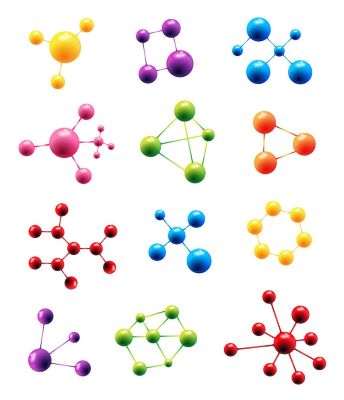Context-
Quantum computing represents a paradigm shift in computational capabilities, leveraging the principles of quantum mechanics to revolutionize information processing. Unlike classical computers that operate on binary bits, quantum computers employ quantum bits or qubits, which can exist in superposition states, enabling parallel computations and potentially solving certain problems exponentially faster.
Fundamentals of Qubits:
A qubit, the foundational unit of quantum computation, exhibits unique quantum properties, including superposition and entanglement. Superposition allows qubits to exist in multiple states simultaneously, while entanglement enables correlations between qubits regardless of their physical separation. These characteristics form the basis for quantum parallelism and computational power.
Challenges in Quantum Computing:
Despite the promise of quantum computing, several challenges hinder its practical realization. One significant obstacle is the fragile nature of qubits, which are susceptible to decoherence due to interactions with the environment. Maintaining quantum coherence, essential for reliable computation, becomes increasingly challenging as the number of qubits and their interactions grow.
Requirements for Qubit Systems:
Building a quantum computer necessitates qubit systems that meet specific criteria. Firstly, qubits should be identical to ensure consistency and reliability in computations. However, achieving perfect qubit uniformity poses manufacturing challenges. Secondly, qubits must be controllable, allowing for precise manipulation and interaction between individual qubits, a prerequisite for quantum gate operations.
Traditional Qubit Technologies:
Several physical systems serve as platforms for realizing qubits, including superconducting junctions, trapped ions, and quantum dots. However, most of these systems operate effectively only at extremely low temperatures or under stringent environmental conditions, rendering them impractical and expensive for widespread adoption.
The Quest for Room-Temperature Qubits:
Researchers worldwide are actively exploring alternative qubit technologies that operate at room temperature, aiming to enhance accessibility and commercial viability of quantum computing. Recent advancements have demonstrated the feasibility of room-temperature qubits, offering promising avenues for scalable quantum computation.
Metal-Organic Frameworks (MOFs) as Qubit Platforms:
A groundbreaking study by a collaborative team in Japan introduced a novel approach to room-temperature qubits using metal-organic frameworks (MOFs). MOFs comprise metal ions interconnected by organic molecules, forming highly porous structures conducive to quantum phenomena.
Understanding Chromophores in MOFs:
In the Japanese study, zirconium-based MOFs integrated organic molecules containing chromophores, such as pentacene. Chromophores are organic moieties capable of absorbing specific wavelengths of light, thereby exhibiting distinct colors. Within a chromophore, electrons transition between energy levels, influencing its optical and quantum properties.
Singlet Fission: A Quantum Phenomenon:
Singlet fission emerges as a key mechanism in MOF-based qubit systems. This process involves the conversion of a singlet excited state into two triplet states, effectively doubling the number of quantum states and enabling enhanced quantum coherence. Singlet fission facilitates energy transfer between chromophores, driving quantum interactions crucial for qubit functionality.
The Role of Quantum Coherence:
Quantum coherence, the persistence of superposition states, is essential for quantum computation. In MOF-based qubits, coherence arises from delicate interactions between chromophores, orchestrated by rotational dynamics within the porous MOF structure. These interactions sustain quantum coherence even at room temperature, a significant breakthrough in quantum computing research.
Experimental Insights and Challenges:
Experimental findings from the Japanese study highlight the robustness and longevity of quantum coherence in MOF-based qubits. Despite promising results, challenges remain in scaling up qubit systems, achieving quantum gate operations, and ensuring controllability and stability in quantum computations.
Future Prospects and Research Directions:
The development of room-temperature qubits opens new frontiers in quantum computing, inviting further exploration and innovation. Future research endeavors will focus on refining qubit architectures, optimizing quantum gate operations, and integrating MOF-based qubits into scalable quantum computing platforms. Collaborative efforts across multidisciplinary fields will drive the advancement of quantum technologies towards practical applications.
Conclusion:
In conclusion, the advent of room-temperature qubits marks a pivotal moment in quantum computing, ushering in a new era of scientific exploration and technological advancement. Leveraging the distinctive attributes of 'colour molecules' embedded within metal-organic frameworks, researchers have unlocked novel pathways for quantum information processing. This breakthrough not only promises unprecedented opportunities for innovation but also underscores the potential of quantum computing to revolutionize diverse fields.
As we embark on the journey towards scalable quantum computing, collaboration, experimentation, and ingenuity will serve as guiding principles. By fostering interdisciplinary partnerships and fostering a culture of relentless exploration, we can fully harness the transformative power of quantum technologies. The pursuit of scalable quantum computing represents a collective endeavor, where the convergence of scientific curiosity and technological prowess will shape the future landscape of computation and discovery. Through concerted efforts and unwavering dedication, we stand poised to unlock the boundless possibilities of a quantum-enabled future.
|
Probable Questions for UPSC Mains Exam-
|
Source- The Hindu







